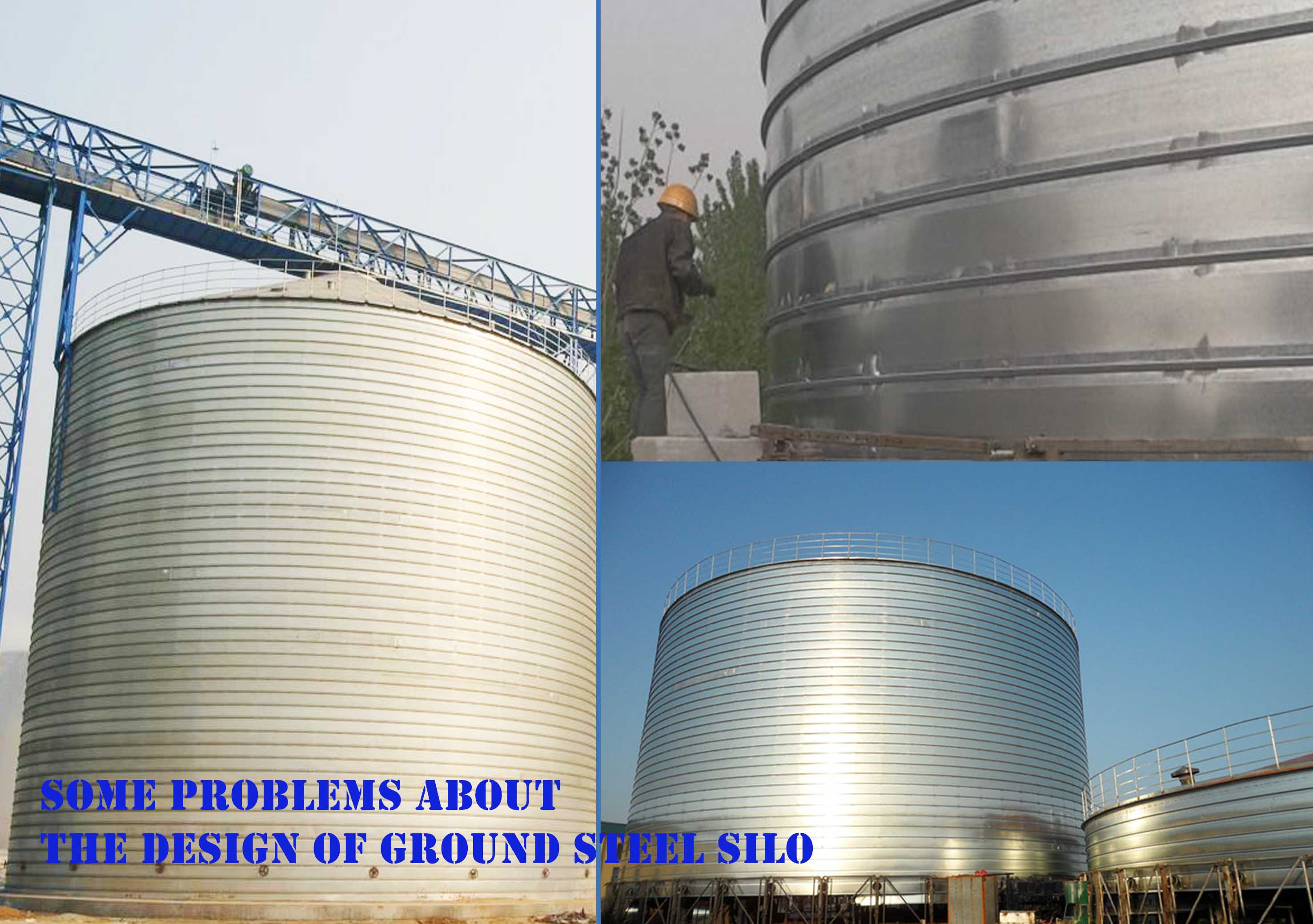some vital points in the design of the ground steel silos
Ground Steel Silo is an important type of large steel silos. As we know, the column-supported steel silos are good choice for small and medium steel silos. But when we are picking a large silo, the weight and the diameter are the first important elements. The structure of the column-supported silos are similar to a chicken foot, which makes their seismic capacity extremely low, so the ground steel silo would be a more appropriate choice for large silos.
With the increasing need for production and space efficiency, more and more large steel silos have been put into use. They are growing more and more popular because of their fine designed cylindrical structure and low material consumption.

However, there are also a lot of accidents caused by large diameter steel silos, which make it important to pay extra attention to some certain points in the design of ground steel silo.
I. Structure of silo body
Ground type is adopted in the design of most large diameter silos. The cylindrical silo is a typical thin-walled structure. Theoretically, when the ratio of the thickness and the minimum curvature radius (i.e. silo radius ratio) is less than or equal to 1/20, it can be considered as a thin-walled structure. The wall thickness ratio of large diameter steel silo is much smaller. So this structure could likely bring us a series of problems.
II. Problems of silo body
1. Core problem
The core point in the designing of steel silo is the stability. Cylindrical walls can be divided into short cylindrical walls, medium cylindrical walls and long cylindrical walls according to the size of their geometric parameters. Each of them has different instability modes corresponding to the critical stress respectively. Steel silos belong to the long cylindrical wall. For large diameter steel silos, most of them are not provided with the conical buckets that are directly connected with the silo walls. So there is no stability problem of ring beam. According to the stress state of steel silos, except that the wall parts at the places influenced by the wind pressure may be instable or collapsed, another two kinds of stresses may cause the instability of silo wall. The first is the instability arousing from the vertical stress (Including the friction between the material and the wall, the load of structures on the silo roof, wind load, seismic moment, etc.) over the critical stress. The vertical stress is generated by the horizontal overturning force. The second is the instability arousing from the shearing stress generated on the horizontal section plane of the wall. At present, the relevant specifications of silo adopt the method of unified reduction based on the theory formula after the comprehensive consideration of various unfavorable factors. At the same time, the factor of the improvement of loading capacity of ring tension stress to the wall.
Besides the above, the parameters of bulk materials can fluctuate within certain constraints in humidity, compaction, size and other aspects. Thus, in the designing process, we should calculate and take different parameter limits to make sure the structure can still be operated even under the most adverse effects. The pressure value of a inner silo can be affected by many factors. Through the calculation, we can obtain a lot of valuable data. The result is that when the material flows, the pressure exceeds the static storage pressure, and as the flow increases, the horizontal pressure increases. But the specific reasons of this phenomenon and the distribution rules are still not clear. Therefore, China's storage standard is equal to the material static pressure correction factor multiplied by the dynamic pressure of 1 value. We do not need to consider the specific flow pattern of the material.
2. The eccentric loading problem
In the design of the steel silo for bulk storage, the loading process is a very crucial problem.The problem of eccentric loading and unloading can cause changing in the lateral pressure. The uneven horizontal circular material pressure will generate vertical and circular bending moments and lead to changes in the overall displacement of the silo and its planar shape. In western countries, the eccentric loading and unloading issue is a highly valued problem. The effect of asymmetric internal pressure is demanded to be carefully considered even in the case of symmetrical loading and unloading of the silo in these countries.It has been proved that most silo accidents are closely related to the eccentric loading and unloading operations, that’s why we should never ignore this problem.
3. The seismic problem
Another problem of steel silo is the seismic problem. The bulk material also has certain rigidity, so we can actually regard the silo wall and the storing materials as a composite combined structure which consists of two kinds of materials, and the horizontal seismic impact will be distributed evenly at the silo wall and the silo bottom.
In addition to the above problems, the silo roof, silo base and silo base structure also has its own characteristics. In the design, we must take full account of the various unfavorable factors.
The key problem of steel silo in design is the partial stability of the silo wall when it is under the effects of vertical stress. Because the rigidity of steel silos along the silo eaves is very small, it is very sensitive to non-uniform load, which means we must pay enough attention to it.
Ground steel silos are a excellent kind of large constructions for storing materials. We value the designing work a lot and endeavor to provide ground steel silos with the highest standard.
FLYER Company has rich experience in the design and the construction of modern large spiral steel silos. We can effectively solve complex design problems you may have. If you have any problems or requirements, please contact us freely, we will provide you the most useful information!
 Español
Español
